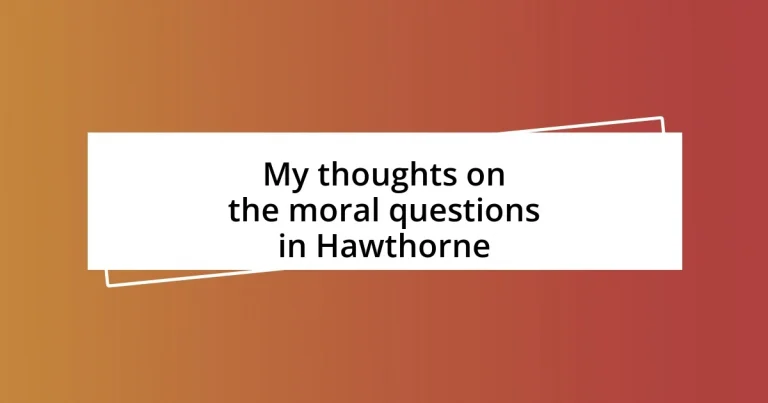Key takeaways:
- Literature, especially Hawthorne’s works, reflects moral complexities that resonate with readers’ personal experiences and choices, prompting self-reflection on values and beliefs.
- Hawthorne’s characters face intricate moral dilemmas, such as Dimmesdale’s guilt and Mr. Hooper’s isolation, highlighting the tension between public persona and private struggles.
- The exploration of morality in Hawthorne’s narratives teaches the importance of confronting societal norms, balancing honesty with empathy, and the weight of secrecy in personal relationships.
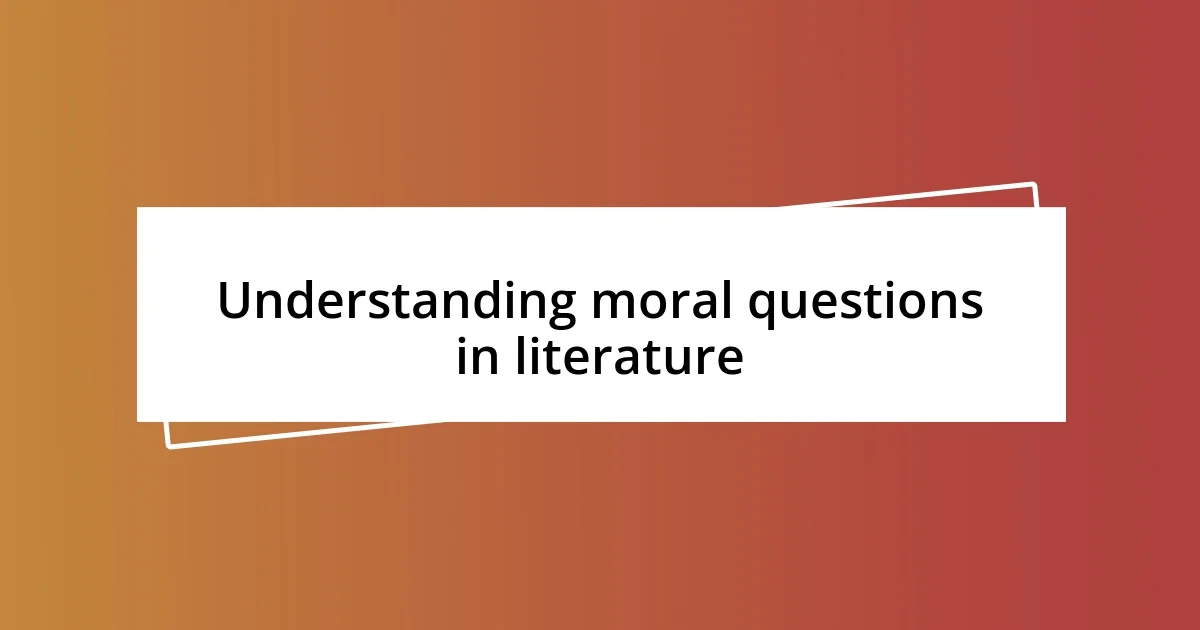
Understanding moral questions in literature
Moral questions in literature often mirror the complexities of real life, prompting us to confront our own values and beliefs. I still remember one particularly heated discussion in my book club about a protagonist’s choice that seemed ethically questionable. It made me wonder: how often do we face similar dilemmas in our own lives, and what guides our decisions—principles, emotions, or societal expectations?
As I dive into a novel, I find myself reflecting on how the characters’ moral struggles resonate with my experiences. For instance, when a character grapples with guilt after making a questionable decision, it brings to light those moments in my life where I’ve had to own up to my mistakes. Have you ever felt that tight knot in your stomach during such moments? That emotional tug often reveals what we truly value, underscoring literature’s power to challenge us.
Literature serves as a mirror, casting back not just the acts of characters but the implications of those acts on us as readers. It raises profound questions that linger long after the last page is turned. When I finish a story steeped in moral conflict, I can’t help but ask myself: am I willing to stand by my convictions, even when the path is unclear? This reflection is what makes the exploration of moral questions in literature so deeply enriching; it invites us to examine our own lives in a new light.
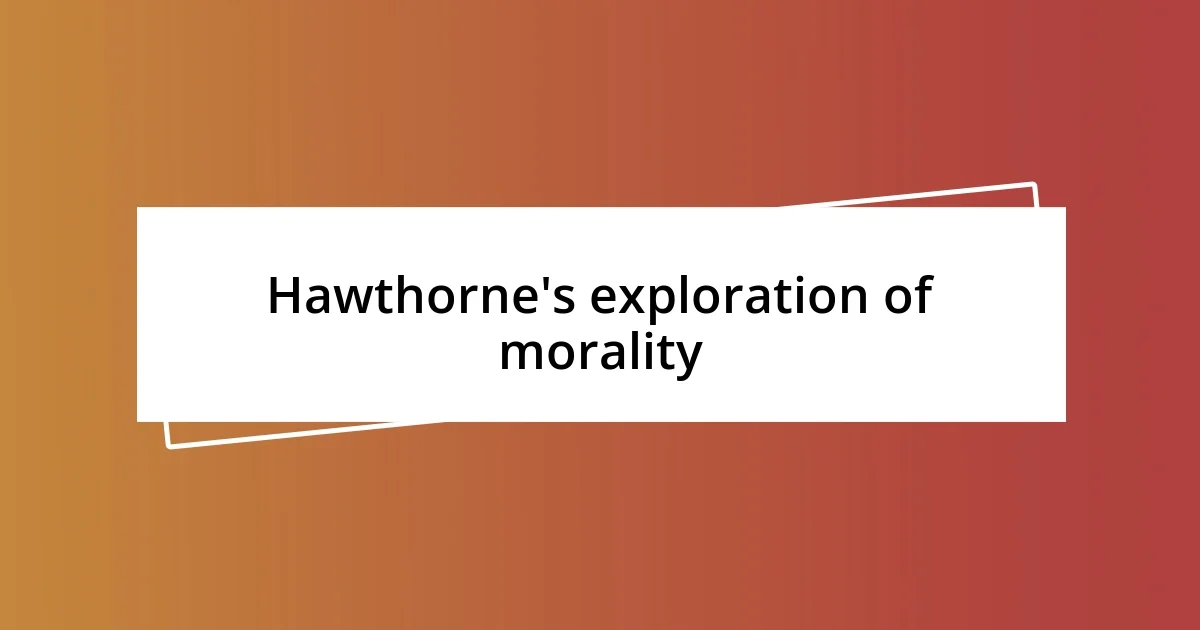
Hawthorne’s exploration of morality
Hawthorne’s exploration of morality is both intricate and poignant, as it often reflects the inner turmoil of his characters. I find it fascinating how he weaves their moral dilemmas into the fabric of the narrative, compelling us to scrutinize our own choices. For example, in “The Scarlet Letter,” Hester Prynne’s journey emphasizes the conflict between societal judgment and personal integrity. It leaves me questioning the true nature of sin: is it defined by our actions or the perceptions of others?
- Characters often face the weight of their secrets, showcasing the struggle between public persona and private guilt.
- The haunting presence of Puritanical values serves as a backdrop, influencing the characters’ sense of right and wrong.
- I can’t help but think about my experiences with judgment—how often we wear masks in our daily lives, hiding our true selves from the world.
- This moral complexity encourages me to reflect on the choices I make and the reasons behind them, fostering a deeper understanding of human nature.
Hawthorne captivates me with the way he allows characters to explore their conscience and ultimately seek redemption. His narratives suggest that morality is not a black-and-white issue; rather, it resides in the grey areas of human experience where each choice carries emotional weight and personal consequence.
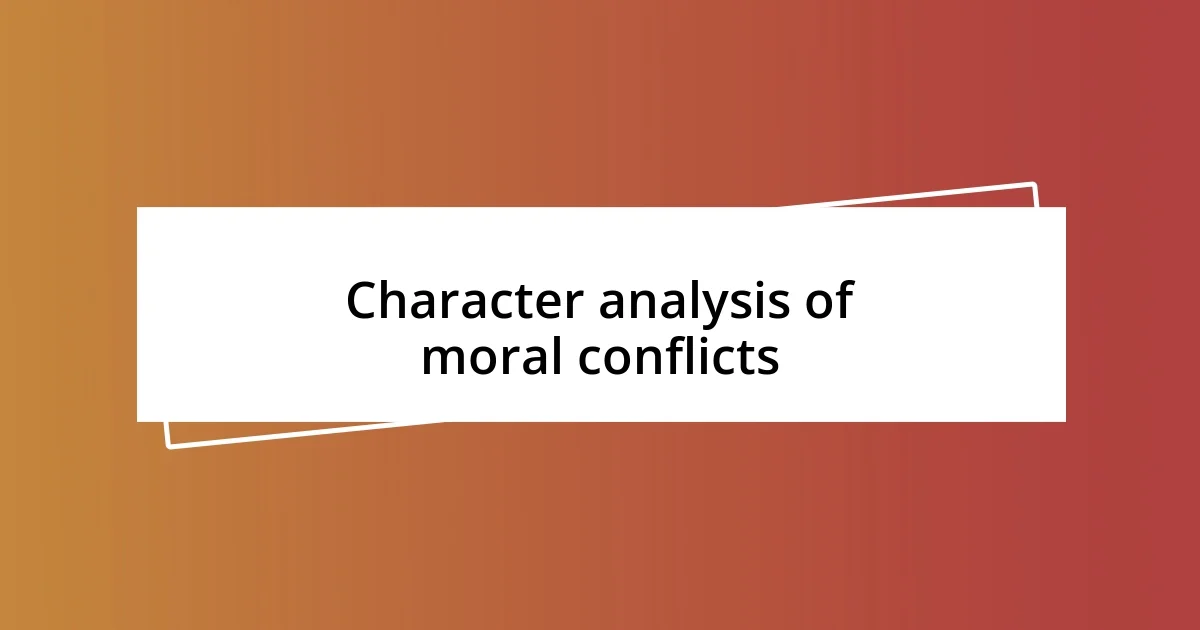
Character analysis of moral conflicts
The moral conflicts in Hawthorne’s works bring forth the struggles of characters who grapple with their choices. Take Dimmesdale from “The Scarlet Letter,” for instance. His internal battle with guilt and shame resonates deeply with anyone who has faced the burden of a secret. It reminds me of a time when I chose to remain silent about a mistake, and the weight of my own silence echoed in my mind. How do we reconcile our public roles with our private struggles? Dimmesdale’s journey of seeking redemption showcases this tension and prompts us to examine our own conflicts.
In “The Minister’s Black Veil,” Mr. Hooper embodies the theme of isolated moral anguish. He willingly dons the veil, creating a chasm between himself and his parishioners, leading to endless speculation about his sins. I recall a situation where fear of judgment made me withdraw from friends, inadvertently creating distance without a clear understanding of the emotional repercussions. Similarly, Hooper’s choice challenges us to consider the relationship between transparency and acceptance. It begs the question: does hiding our flaws protect us, or does it imprison us?
Hawthorne’s characters often reflect a spectrum of moral dilemmas, emphasizing that their decisions are never simply right or wrong. This complexity strikes a chord with me, as I frequently find myself weighing decisions through emotional lenses. For example, when I had to decide whether to confront a colleague over an ethical issue, I was torn between loyalty and integrity. This navigation through moral conflict is what makes Hawthorne’s characters powerful—they mirror our own human experiences, faceting the intricate web of morality in our daily lives.
| Character | Moral Conflict |
|---|---|
| Dimmesdale | Struggles with guilt over his secret sin and seeks redemption. |
| Mr. Hooper | Wears the veil to symbolize hidden sins and isolation from society. |
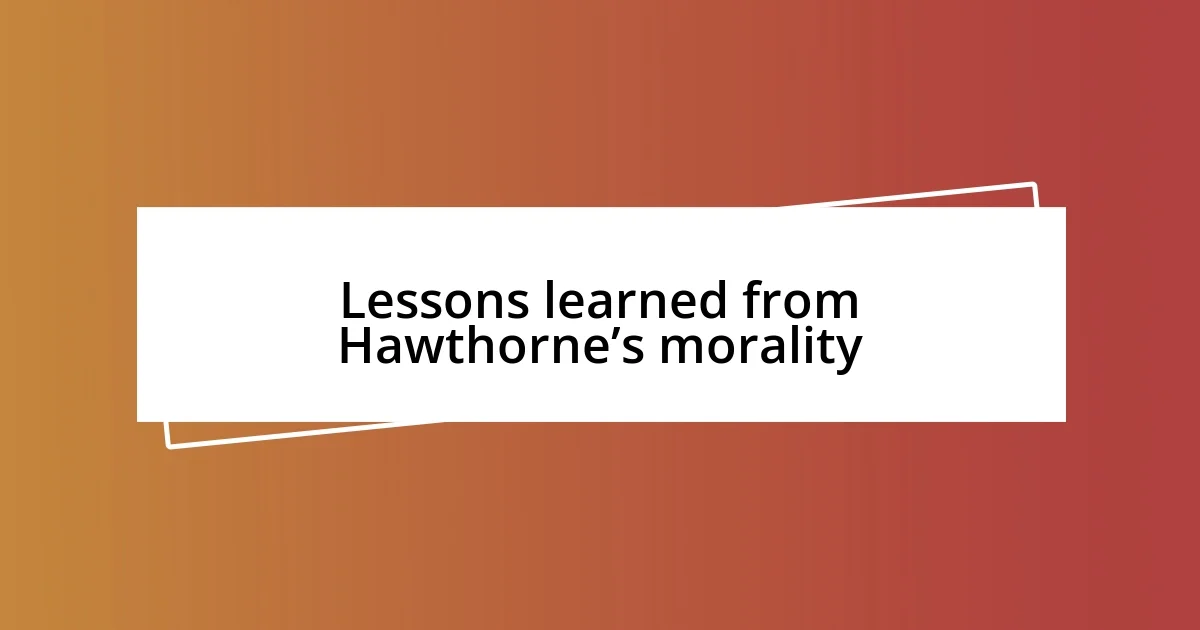
Lessons learned from Hawthorne’s morality
Hawthorne’s exploration of morality teaches us that our choices often carry implications far beyond ourselves. When I reflect on moments where I’ve had to choose between honesty and preserving someone’s feelings, I realize how complex that decision can be. It’s about finding balance—do I protect someone’s emotions or uphold my values? This constant negotiation mirrors what Hawthorne illustrates through his characters.
The weight of secrets is another profound lesson Hawthorne imparts. I think back to a time when a simple lie snowballed, creating a rift between me and a close friend. The moment I confessed, I felt an immense relief, yet I also braced for the consequences. This personal turmoil mirrors Dimmesdale’s struggle, underscoring how secrecy can isolate us, making the act of confessing a step towards moral clarity.
Furthermore, Hawthorne prompts us to question societal norms and their impact on our ethical landscape. Take, for instance, the pressure I felt during a team project to agree with a decision I fundamentally disagreed with. It sparked a realization: are we simply products of our environment, or do we have the agency to challenge it? This inquiry resonates deeply within Hawthorne’s narratives, encouraging us to redefine our understanding of right and wrong based on personal conviction rather than societal expectations.












